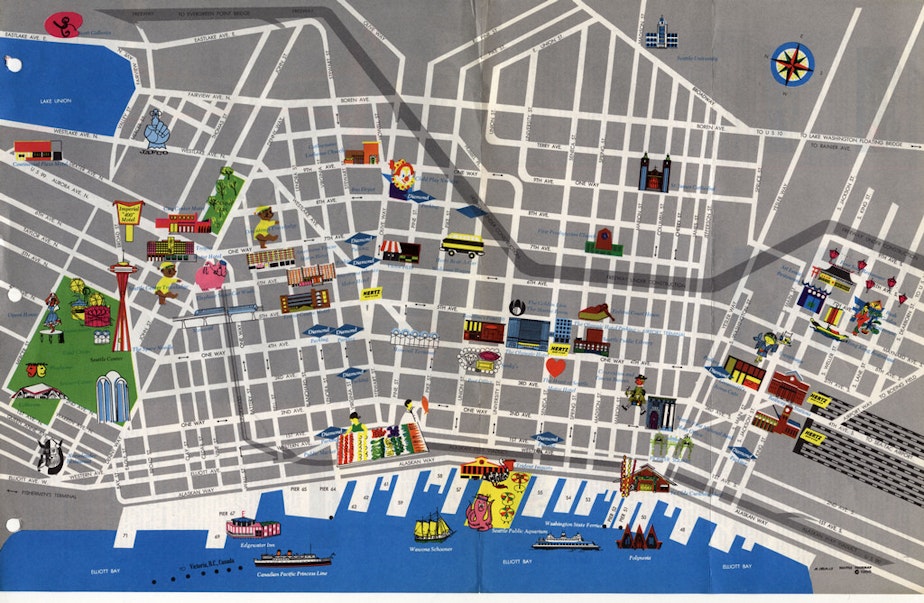Why do three Seattle blocks have their own ZIP codes?

If you’ve ever had a reason to look up Seattle’s ZIP codes — and yes, being bored at work is a valid reason — you might have noticed some super-tiny codes downtown.
“What's up with the one-block ZIP codes downtown: 98174, 98164, 98154?” asked Alexander Froehlich, a Local Wonder listener. “Bizarre census data too!”
Bizarre indeed, considering that most of Seattle’s ZIP codes encompass entire neighborhoods — and ZIP codes in the Puget Sound area can apply to entire cities. So what makes those downtown blocks so special?
Ernie Swanson, spokesman for the United States Postal Service, told us it’s about what’s sitting on those blocks. The ZIP code 98164 encompasses the Seattle Central Library (at 1000 Fourth Avenue) and the block directly south. Swanson said that ZIP code exists exclusively for routing mail to the city’s largest library.
“They receive enough mail for the Postal Service to justify assigning them a unique ZIP code,” Swanson said by email. The block south, also within that unique ZIP code, includes library offices.
Sponsored
Likewise, 98174 applies exclusively to the Henry M. Jackson Federal Building at 915 Second Avenue, which houses offices for the Internal Revenue Service, the U.S. Coast Guard and the U.S. Department of Veterans Affairs. Other tenants of the federal building include Senators Patty Murray and Maria Cantwell.
The ZIP code 98154 applies to offices in Safeco Plaza at 1001 Fourth Avenue, directly across the street from the Seattle Central Library. What’s so special about Safeco Plaza? The building used to house the corporate headquarters for Seafirst Bank, which assumed the name of parent corporation Bank of America in 2000. Even though Seafirst isn’t around anymore, offices in Safeco Plaza still have a unique ZIP code thanks to the long-time Seattle institution.
But what is a ZIP code anyway? ZIP stands for “Zone Improvement Plan,” and the codes were introduced in 1963 to help sort and route mail more efficiently.
“The decision to provide a mailer with a unique ZIP code is based on multiple platforms besides just mail volume,” Swanson said. USPS also considers factors such as transportation and processing costs.
It’s not unusual for individual buildings or entities to have their own ZIP codes. The White House has its own ZIP code and so does the Empire State Building in New York and Willis Tower in Chicago.
Sponsored
Sometimes, the small codes aren’t well known, or even used much. Library officials were surprised to hear the Central Library has its own ZIP code; they’ve been directing people to use 98104, which applies to the downtown business district surrounding the library.
“This is the same ZIP code we have been using for as long as our business office coordinator has been here, which is well over two decades,” said library spokeswoman Andra Addison.
That’s the same code USPS.com’s “Look Up a ZIP Code” tool identifies for the Central Library, too.
The moral of the story? It seems USPS will get that mail where it needs to go, tiny ZIP code or not.
This story was inspired by a question from Alexander Froehlich of Seattle. Submit your local wonder about the Puget Sound region. If your question is chosen a KUOW reporter will investigate it.
